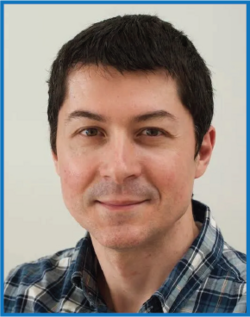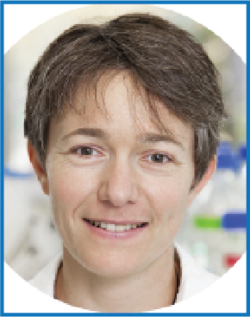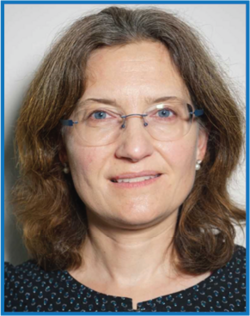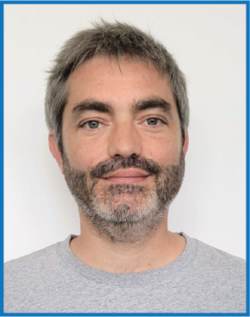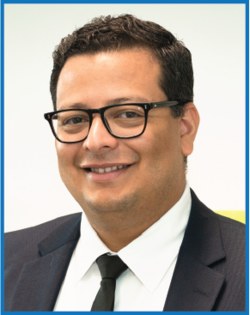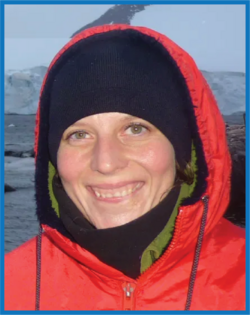Invited Talk Speakers
Prof. Vincent Noireaux
Professor at School of Physics and Astronomy, University of Minnesota, Minneapolis, USA
Bioengineering with an E. coli cell-free gene expression system
Vincent Noireaux’s lab has developed a cell-free transcription-translation (TXTL) platform to construct biochemical systems in vitro by executing synthetic gene circuits. Unlike the other cell-free expression systems, their platform is based on an E. coli extract that uses the endogenous TX and TL machineries. The circuits (plasmids or linear DNA) are executed in a cell-free TXTL mix entirely prepared in their lab. This cell-free system is available under the name myTXTL at Arbor Biosciences. The lab’s research is based on this unique system and includes: (I) prototyping regulatory elements and circuits, (II) quantitative biology of self-assembly with phages as models, (III) bottom-up construction of a minimal cell, (IV) application to biotechnologies and medicine. Their work is both fundamental and applied and covers the research areas of synthetic biology and quantitative biology such as biological physics.
Prof. Stephanie Blandin
IBMC, Strasbourg, France
Manipulating mosquito/parasite interactions to reduce malaria transmission
With 249 million cases and more than 600 000 deaths in 2022, malaria remains one of the three major infectious diseases. The causative Plasmodium parasites are transmitted by Anopheles mosquitoes. In parallel to the development of vaccines and new therapies, the genetic modification of mosquito vectors using gene drives has the potential to drastically reduce the burden of malaria. Gene drives are egoistic genetic elements that can spread a desired modification, for instance, a transmission-blocking modification, in a targeted population. We have developed a dual gene drive system where parasite development is altered at two stages. The design, efficiency and potential limitations of this genetic technology will be discussed.
Prof. Pierre Stallforth
Leibniz Institute for Natural Product Research and Infection Biology – Hans Knöll Institute, Jena, Germany
Natural Products From Interacting Microorganisms and Ancient Microbiomes
Microbial natural products have been an indispensable source of novel therapeutic agents. The search for new bioactive natural products has prompted scientists to exploit environmental niches in which the production of these compounds can be anticipated. Microbial predator–prey interactions are particularly rich sources of natural products. We describe one such interaction in which bacterivorous amoebae and their prokaryotic prey meet. Amoebae are voracious and ubiquitous predators to bacteria that cause constant depletion of huge bacterial reservoirs. This puts both organisms under strong evolutionary selection pressure: the bacteria have evolved mechanisms to prevent grazing and the amoebae must counteract or surmount these mechanisms in order to survive. We are particularly interested in the biosynthesis and evolution of these amoebicidal microbial natural products and we shine light on polymicrobial natural product modifications within this context. Recently, we have exploited means to gain access to microbial natural products diversity the past. To this end, we use ancient bacterial DNA to identify and eventually express biosynthetic genes.
Dr. Gudrun Dandekar
Chair of Tissue Engineering and Regenerative Medicine, University Hospital Würzburg, Würzburg, Germany
Living in the Lab - Options in Engineering and Regenerative Medicine
The Chair of Tissue Engineering and Regenerative Medicine (TERM) has the vision to improve the high failure-rate in preclinical testing and to generate high quality implants. Reasons for wrong efficacy predictions in the preclinic are among others interspecies differences between mice and men. Engineering of tissues has the potential to improve preclinical testing and contributes to the 3R concept to replace and reduce animal experiments. Recent developments of TERM will be presented after a short overview of basic principles in Tissue Engineering. For the generation of artificial tissues in vitro the understanding of tissue biology in healthy and diseased state and during development and regeneration is a prerequisite. Cells connected to other cells and extracellular matrices grow in an in vivo-like homeostasis in specific tissue niches in contrast to conventional 2D culture. Furthermore, bioreactors improve tissue generation by a constant nutrient supply and waste disposal. As examples, human inducible pluripotent stem cell-based blood-brain barrier models and tumor test systems will be presented and how nasal chondrocytes can be used as implants for cartilage therapy. In conclusion, advanced test systems and implants reaching clinical studies could be developed mimicking features from living individuals. This contributes to animal experiment replacement.
Christophe Leterrier, PhD
Aix Marseille Université, CNRS, INP, NeuroCyto Lab, Marseille, France
The axonal cytoskeleton down to the nanoscale
The intricate arborization and molecular identity of axons is maintained for decades, but must also continuously adapt to changes in the environment and modulate the activity of neurons. Axons fulfill these paradoxical demands thanks to a unique cytoskeletal organization that ensures the coordinated transport, anchoring and assembly of axonal components. In our lab, we use super-resolution microscopy to delineate and map the nanoscale architecture of cytoskeletal structures within the axon: the periodic actin/spectrin submembrane scaffold, intra-axonal hotspots and trails, presynaptic actin assemblies, clathrin-coated pits. We are exploring their molecular organization and functions by combining versatile labeling approaches, correlative live-cell/super-resolution/electron microscopy and quantitative analysis that allow for high-content, nanoscale interrogation of the axonal architecture.
Prof. Carlos Talavera-López
Junior Professor at the Julius-Maximilian-Universität, Würzburg, Germany
Dynamics of cellular collectives in the healthy human heart
Recent advances in single-cell and spatial biology have outlined the cellular composition of different organs and their localisation within anatomical entities. Using graph learning and principles of economics, we can identify the emergent social behaviour of these cells using their spatial localisation and transcriptional (GEX) and epigenetic (ATAC) activity. With this approach, we have studied how cellular collectives operate in cardiac homeostasis, highlighting the immune potential of cardiomyocytes, their interplay with innate immune cells, and how these collectives vary across anatomical regions.
Dr. Scarlett Trimborn
Senior Scientist at AWI/ Ecological Chemistry, Bremerhaven, Germany
Southern Ocean phytoplankton - Key drivers of CO2 uptake
The Southern Ocean influences global water circulation and acts as atmospheric CO2 sink, thus affecting our climate at a global scale. In this context, CO2 consumption via photosynthesis by microscopic plants, called phytoplankton, is key. Phytoplankton forms the basis of the food web and supports large animal populations from krill to whales. In the Southern Ocean, the input of the trace metal iron (Fe) is the primary control of phytoplankton growth and CO2 fixation, thus affecting the biological CO2 uptake of the Southern Ocean and ultimately global CO2 fluxes. In this talk, I will highlight field studies that we performed during Polarstern expeditions to the Antarctic: 1) investigating the impact of Fe and manganese on Antarctic primary production and carbon export, revealing the importance of manganese beyond Fe in driving Antarctic phytoplankton species composition and 2) pinpoint the importance of animals such as Antarctic krill and salps as important drivers of Antarctic phytoplankton productivity.
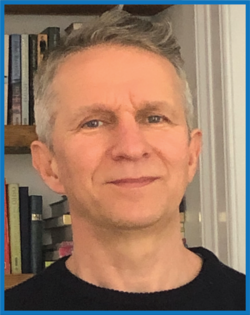
Prof. Ross Fitzgerald
Chair of Molecular Bacteriology at the Roslin Institute, Edinburgh, UK
Dissecting the evolutionary functional genomics of the multi-host pathogen Staphylococcus aureus
The emergence of new pathogens is a major threat to public and veterinary health. Staphylococcus aureus is a multi-host bacterial pathogen and one of the leading causes of antibiotic resistance-associated mortality worldwide. While S. aureus is notorious as a human pathogen, its evolutionary history is marked by numerous host-switching events between humans and livestock in both directions leading to the emergence of new pathogenic clones circulating in distinct host populations. In this talk, I will trace the evolutionary origins of some of the major contemporary clones of S. aureus causing disease in humans and livestock and examine their spatial and temporal dynamics. In addition I will discuss insights into the role of horizontal gene transfer, and mutation in the ability of S. aureus to adapt to different niches after a host-switch event and dissect some of the mechanisms involved.

